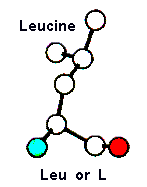

The term secondary structure refers to the geometry of a polypeptide's N-C-C backbone, which can be randomly coiled or may be ordered in special ways. The nature of these is discussed in the following sections.

Proteins are not only long chains, but fold up into complex 3-D structures that include lengths of randomly coiled chain along with regions of ordered structure. Nature clearly has many options for the construction of proteins from different permutations of the 20-odd amino acids that are routinely available.īecause the α-amino acids are single enantiomers, the polypeptides and proteins that are formed from them are also chiral (handed) molecules. An octapeptide has 40,320 possible primary structures. It is this sequence of amino acids in a polypeptide chain that is referred to as its primary structure. In general, when polymerising n different amino acids (using each once) there are n! possible sequences of product. For example, the pentapeptide met-enkephalin can be written as H-Tyr-Gly-Gly-Phe-Met-OH. Three-letter codes are very useful for describing polypeptides without having to draw them. The amino acid at the left-hand end is referred to as the N -terminal amino acid, and the amino acid at the right-hand end is referred to as the C -terminal amino acid. The convention for drawing peptides is to put the N-terminus on the left. When the new amide bond involves two of the natural amino acids, it is referred to as a peptide bond. These can form amides by the condensation of the amine group of one amino acid with the carboxylic acid group of another. The building blocks of proteins are approximately twenty naturally occurring alpha-amino acids (for structures, see Appendix 3: Proteinogenic Amino Acids). One distinction is between simple and conjugated proteins: Simple proteins are composed entirely of amino acids conjugated proteins have a non-amino acid component (called a prosthetic group). Proteins can be classified with reference to any of several distinguishing features (molecular weight, occurrence, solubility, etc.). Some useful definitions of these roles are shown in the box on the right. Proteins are polymeric amino acids of high molecular weight, arbitrarily 10,000 Da or more, which fulfil important roles in an organism's life cycle.


 0 kommentar(er)
0 kommentar(er)
